How to Secure a Trampoline for High Winds
How to Secure a Trampoline for High Winds
Trampolines have a large surface area which makes them particularly susceptible to flying away in high winds. For example; trampolines can become airborne and entangled in power lines, creating a very dangerous situation that could've been easily prevented. Storms come and go at random, and if you haven't prepared prior to a storm then its usually too late!
This guide outlines the steps we recommend taking to secure your trampoline down and reduce the chance of the worst happening to you. Prevention is always the best form of protection. If you have any questions feel free to contact us.
Buy GeeTramp and Vuly Anchor Kits Here
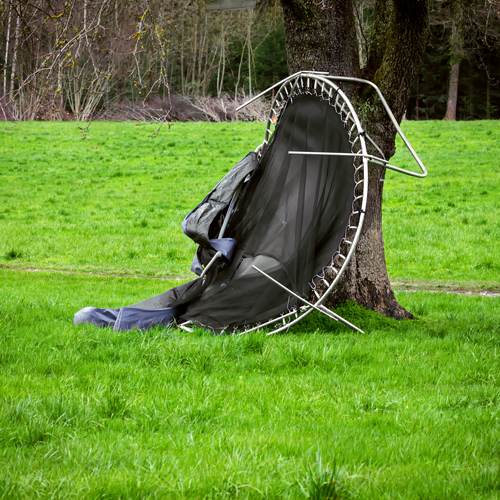
What are we trying to avoid?
This is a picture of a trampoline that wasn't secured correctly and went airborne on a windy day. Obviously, we don't want this happening to you! So, scroll through and follow our quick tutorial to save your trampoline from the next high winds that come through your backyard.
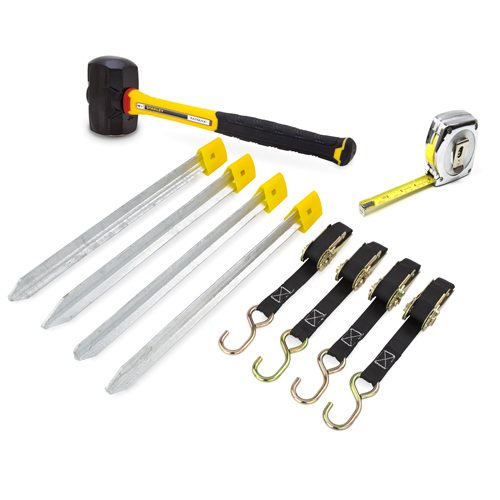
What Do I Need ?
- A trampoline wind anchor kit (we recommended any from Here). The GeeTramp and Vuly anchor kits are Australian designed specifically for securing trampolines in our climate and soil - clay, sand and rock!.
- Or, you can buy 4 star pickets and 4 ratchet straps to suit from local hardware (NOTE: just make sure the hook on the ratchet strap will go through the hole in the star picket before you bang the post in the ground).
- A metal sledgehammer.
- A tape measure (recommended but, not necessary).
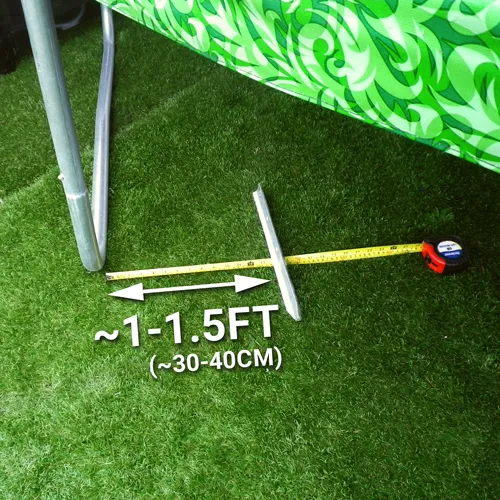
Measure & Mark
- Measure about 35cm out from the inside of your trampoline leg
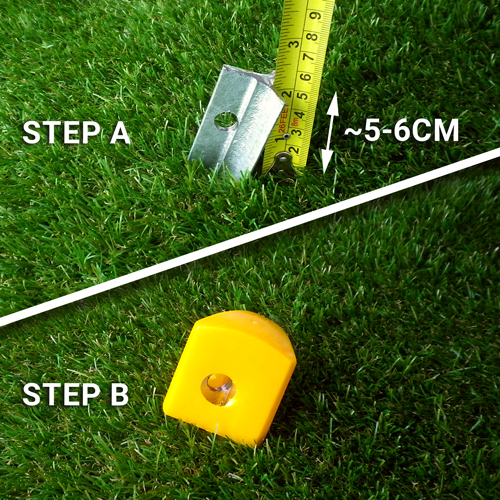
Install The Picket
- Hammer the picket into the ground on a 60-degree angle
- Keep hammering until the top is about 5-6cm from the ground
- Once the picket is firmly into the ground, fit the yellow cap
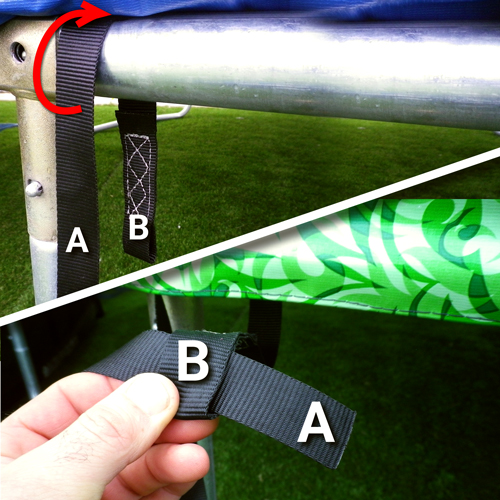
Hook & Loop
- Wrap the strap around the upper frame ring (where the springs attach)
- Insert the 'A' end through the 'B' end of the strap
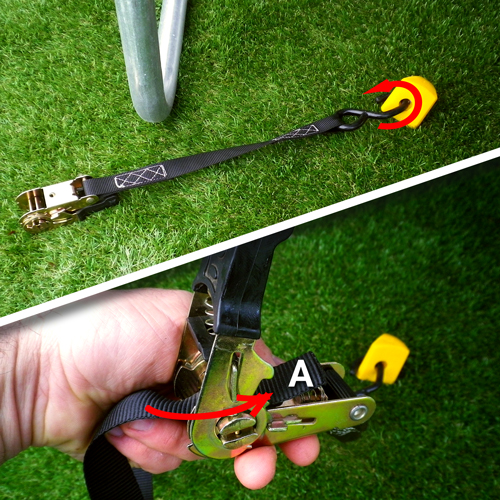
Install The Ratchet
- Hook the 'hook' end of the ratchet through the star picket
- Get the other end you just looped around the frame and thread the 'A' end through the ratchet
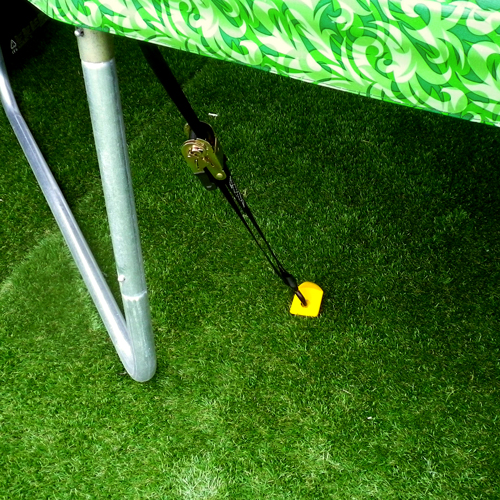
Tighten & Repeat
- Tighten the ratchet until the strap is under tension (make sure you don't over-tighten it)
- Repeat this 3 more times and you're done
Additional Notes
Often people will secure the trampoline with railway sleepers or concrete over the trampoline legs. This may hold the trampoline in many cases but all too often the trampoline will break away from the legs and fly away. If you anchor the base of the legs it puts more strain on the frame leg joints. This is because the "stress" of jumping is taken out through to the frame and sometimes the slight movement helps dissipates this. By securing from the top of the frame you are supporting it at the strongest anchor point.
Note: this will certainly hold in many of the high winds you are likely to encounter, but extreme weather conditions will challenge anything! If your frame has any bolts or screws holding the frame and or the legs together then we suggest that you regularly check these are all secure. This will also keep your trampoline strong and more likely to hold up to high winds. When known winds are coming, ensure any objects that could fly into your trampoline and cause damage are secured down. Overhead tree branches also do a lot of damage to trampolines! There are no guarantees of what can happen in high winds but we have heard insurance companies are more likely to be obliged to cover you if you have a suitable policy.
Web and Warehouse do not guarantee that the this will fully prevent the trampoline from moving under all weather conditions.